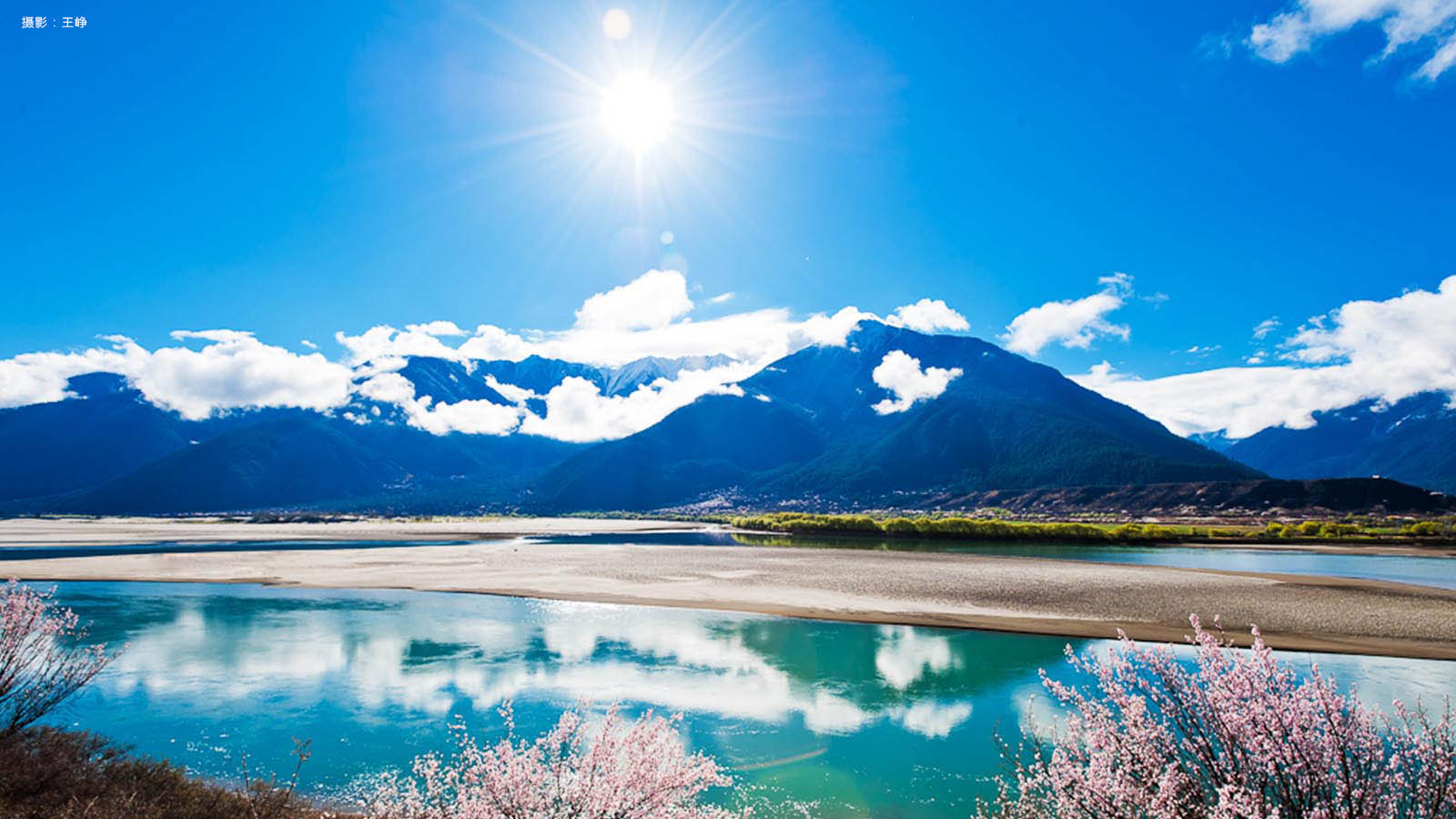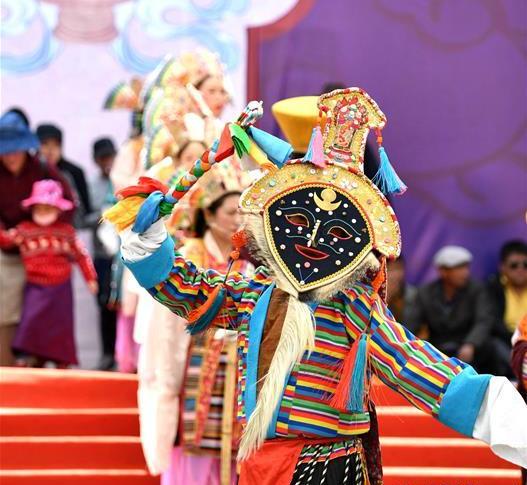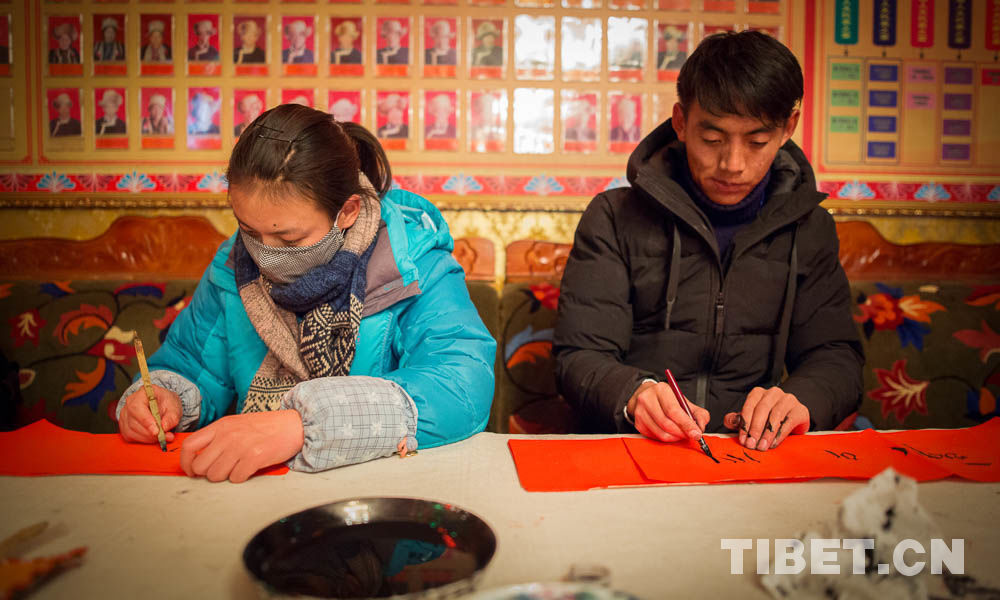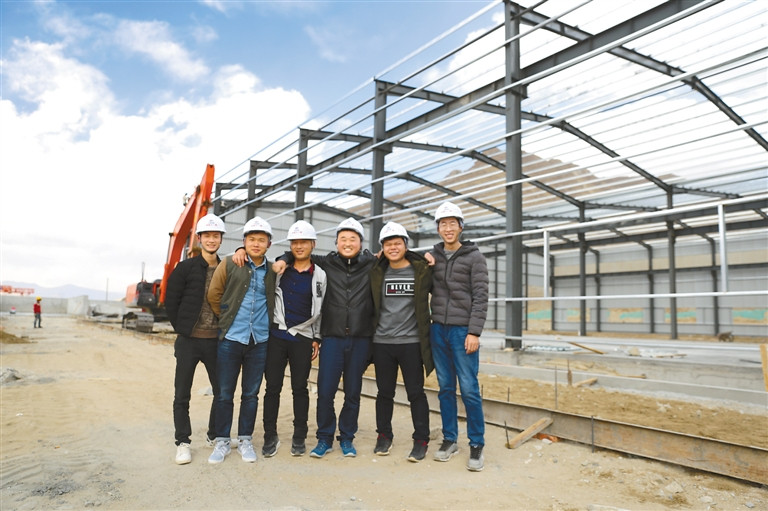Travel perks help Tibet work wonders
The Tibet autonomous region has extended a package of favorable travel policies it introduced earlier this year to boost winter tourism, in a bid to ride the wave of success that saw its seasonal visitor numbers soar.
Tibet's unique natural landscape and range of folk customs have long made the place an appealing destination for visitors both from home and abroad.
In 2017, Tibet received 25.61 million travel visits, a rise of 10.6 percent over the previous year. This helped reverse the downward trend seen in previous years, where the region had been struggling with sluggish winter visitor numbers.
To tap into its rich winter resources, Tibet developed a package of favorable policies for travel and accommodation in a bid to revitalize the winter tourism season from February to April.
All of Tibet's A-rated scenic spots offered free entry during this period, while the launch of many new routes for chartered flights and special trains to the region also helped drive tourist numbers to Tibet to a record high.
Under the package of incentives, the region witnessed an unprecedented boom in winter tourism numbers. It received 2.67 million visits by travelers during the first four winter months of this year, according to a report by the Tibet tourism development commission.
Visits by inbound tourists grew 50.5 percent year-on-year to 40,000 during the same period, while domestic visits surged 63.7 percent to 2.63 million.
Total tourism income hit 3.5 billion yuan ($551.7 million) in the same period, an increase of 62.8 percent.
Riding on the wave of the winter tourism promotion, the peach flower festival held in Nyingchi on March 29 had packed in 657,000 tourist visits by early April, a rise of 62 percent compared with the same period the previous year.
The festival also saw tourism income reach 520 million yuan, an increase of 57 percent compared to the previous year.
Looking to maintain this momentum, Tibet tourism authorities recently announced they would extend many of these travel incentives until the end of June 30.
A total of 26 major scenic spots, with the exception of Potala Palace but including Jokhang Temple, Norbulingka Summer Palace and Tashilhunpo Monastery will continue to offer a 50-percent discount on their entry tickets.
Zhang Ying is just one of the beneficiaries from Tibet's booming tourism industry.
The operator of a private inn in Lhasa, Zhang has seen occupancy rates at her hotel rise by 20 to 30 percent over the winter period.
This prosperity has also encouraged more local farmers and herdsmen to get in on the action and boost interaction among the various ethnic groups in the region.
In Nyingchi, the Deng (Mishmi) people are giving up working as farmers in their hereditary homeland to work as managers at scenic spots in the area.
More than 700 locals have joined the cast of the Princess Wencheng outdoor show in Lhasa, while more than 400 people from 24 villages surrounding the Qomolangma (Mount Everest) scenic area are now making a living from running family hotels, offering yak transportation services or selling artifacts.
By the end of 2017, more than 125,000 local people were involved in the tourism-related businesses, providing them with an average per capita income of around 12,000 yuan.
The Tibet tourism development commission has been working with the Lhasa government to jointly roll out travel products featuring distinctive Tibetan homestays, where visitors can enjoy unique local customs and cuisine.
Folk performances, campfire parties and equestrian shows will also be staged to spice up the travel experience across Tibet during peak travel seasons.
At the same time, the region is also introducing innovative new tourist services to draw in more visitors.
Three helicopter sightseeing routes departing from Lhasa to the Namtso and Yamdrok lakes have opened up. A tourism route that covers eight counties and districts in the north of the region will also be developed later this year.
A total of 10 tourism culture commodity exhibition centers and a handful of villages featuring ethnic handicraft art are planned to be built in the near future.
These measures are all part of a plan by local tourism authorities to transform Tibet into a year-round travel destination to match any other in China.
Your Comment
Name E-mailRelated News
-
-

-
Direct air route to link Hubei, Tibet
A direct air route will be launched on May 18 between the central Chinese city of Wuhan and Lhasa, capital of southwest China's Tibet Autonomous Region, according to Hubei Airport Group.
-
-
-

-
Tibetan fashion show held in east China
The "Cultural Creation of Tibet: Tibet and Lhasa Creative Products Tour Exhibition" was held from May 4 to 7 in east China's Jiangsu Province.
-
-
-

-
Tibet to have universal broadband service
Ninety-eight percent of administrative villages in China's Tibet Autonomous Region will have optical fibre communication thanks to a universal telecom service project.
-
-
-

-
Discount prices draw travelers to Tibet
Travelers can continue to enjoy discounted tickets at major scenic spots and for transportation in the Tibet autonomous region until the end of June.
-
-
-

-
Tibet home to more inheritors of intangible cultural heritage
Southwest China's Tibet Autonomous Region has an additional 28 national-level intangible cultural heritage representative inheritors.
-







